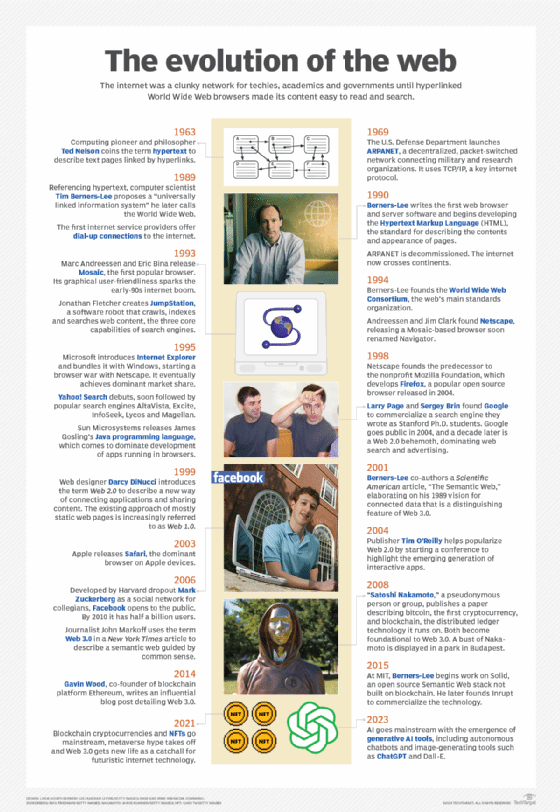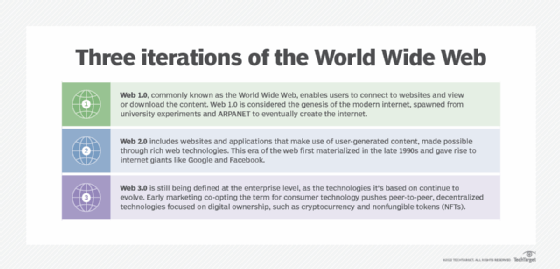Netscape
What is Netscape?
Netscape Communications Corporation ("Netscape") was a computer services company best known for its web browser, Navigator. Navigator was one of the two most popular web browsers in the 1990s along with Microsoft's Internet Explorer (IE). Following the rapid growth of IE's popularity, the use of Navigator started to decline worldwide. Netscape was eventually acquired by America Online (AOL) in 1998, which discontinued support for the Navigator browser in 2008.
History of Netscape
In 1993, Marc Andreessen and James Clark co-founded Netscape. Within a year, a development team led by Andreessen created the Mosaic Internet Web Browser at the University of Illinois' National Center for Supercomputing Applications (NCSA). The company was originally known as Mosaic Communications Corporation. Its name was changed to Netscape following a dispute between the company and the University, which had trademarked the Mosaic name.
Mosaic was the first popular web browser with a graphical user interface (GUI). Netscape made the browser freely available, which contributed to its rapid rise in popularity. Mosaic was renamed Mozilla (meaning "Mosaic Killer") and subsequently, Netscape Navigator. Unlike Mosaic, Navigator was made available to the general public under a Shareware distribution model, meaning users could try it first but ultimately had to pay to continue using it.
Andreessen and Clark took Netscape Communications public in 1995 to capitalize on the growing interest in the internet and the World Wide Web (WWW). At the time, Netscape also entered joint ventures with many prominent tech companies such as Oracle and General Electric (GE). Netscape's hugely successful IPO is widely considered to be the precursor to the 1990s internet boom (which eventually turned into the now-famous dot-com bubble and subsequent bursting of the bubble). By 1996, Navigator and IE were the two most popular web browsers.
In 1998, Netscape was purchased by AOL, but well before the acquisition, Netscape was set up to connect to www.netscape.com by default. Owing to the browser's popularity, the site quickly became one of the busiest sites on the web. AOL initially envisioned this website as a web portal that would function as a source of revenue for Netscape through advertising and e-commerce.
Also in 1998, Netscape started the Open Source Mozilla project, which eventually resulted in the development of the still-popular Firefox web browser. The emergence of that free browser and the continued dominance of IE led to the decline of Netscape Navigator and AOL discontinuing support in 2008.

Why Netscape Navigator became popular
Navigator's GUI removed the need to use Unix OS line commands to access and use the internet. The browser could display graphics and supported point-and-click actions. As a result, it made the internet accessible to more users than previously when the technology was mainly limited to users in the government and academia. With Navigator, anybody could easily navigate the web to find, view and download data.
Netscape's founders capitalized on the browser's popularity by developing and releasing many other server applications for e-commerce and security. The company also acquired many smaller companies and partnered with larger companies to develop new applications and services.
In just a couple of years, Netscape added numerous enhancements to the Navigator browser, including email, news feeds and a plugin interface for users to develop their own modules. Netscape also licensed the Java programming language from Sun Microsystems for Navigator. The two companies further collaborated to define the JavaScript programming language that would help users to create interactive websites.
Before its downfall, Netscape had developed several server applications and corporate services, including Communicator and Netcenter. Communicator added workgroup-collaboration features to Navigator, while Netcenter was Netscape's information and commerce service that provided users with a free email account, an instant messaging account and allowed them to access online channels for news, entertainment, sports, weather and finance.

Battle with Microsoft
Microsoft released the IE browser in 1995, just one year after the debut of Netscape Navigator. Unlike Navigator, which was a standalone product, IE was bundled with the Windows operating system. Windows quickly became the OS of choice for millions of users around the world, which contributed to the popularity of IE.
By 2001, Navigator's market share had dropped significantly, and Netscape accused Microsoft of unfair business practices and unlawful monopolization attempts. Netscape filed numerous complaints with regulatory bodies in the U.S., and the United States District Court for the District of Columbia agreed and ruled that Microsoft had held and abused monopolistic power. Netscape and AOL ultimately reached a settlement agreement for $750 million. Microsoft also agreed to change some of its business practices and AOL gained the rights to use and distribute IE.
Why Netscape Navigator failed
For a few years after its release, Navigator was the predominant web browser due to its usability and rapid increase in the number of active users. But Microsoft's decision to bundle its IE browser with the Windows 95 OS significantly reduced the number of Navigator users. Also, unlike Navigator, IE was available for free, even for Microsoft's business users. Those two factors led to the increasing popularity of IE and the eventual decline of Navigator.
Starting in 1998, Netscape made Navigator available for free. By that time, Navigator wasn't just a simple browser to access the internet, but a platform on which other developers could build their own applications. To support these developers, Netscape also made Navigator's source code freely available for customizations and enhancements.
At the same time, IE had already gained a stronghold in the browser market, which Netscape was never able to break, despite its new innovations and its successful antitrust lawsuit against Microsoft. Microsoft invested a lot of programming resources and capital in improving IE's features and performance, and its efforts eventually resulted in a more stable browser that was significantly better than Netscape's increasingly buggy product. Finally, Microsoft's clever product bundling strategy and marketing efforts resulted in IE winning the war to become the internet's most popular browser, a position that it held for the next couple of decades.
By 2008, AOL -- by then known as AOL Time Warner Inc. -- discontinued support for the Navigator browser. Older versions of Navigator can still be downloaded, but there's no guarantee that they will be usable or secure in today's cyber threat landscape.
Learn the differences between Web 2.0 vs. Web 3.0 vs. Web 1.0.
